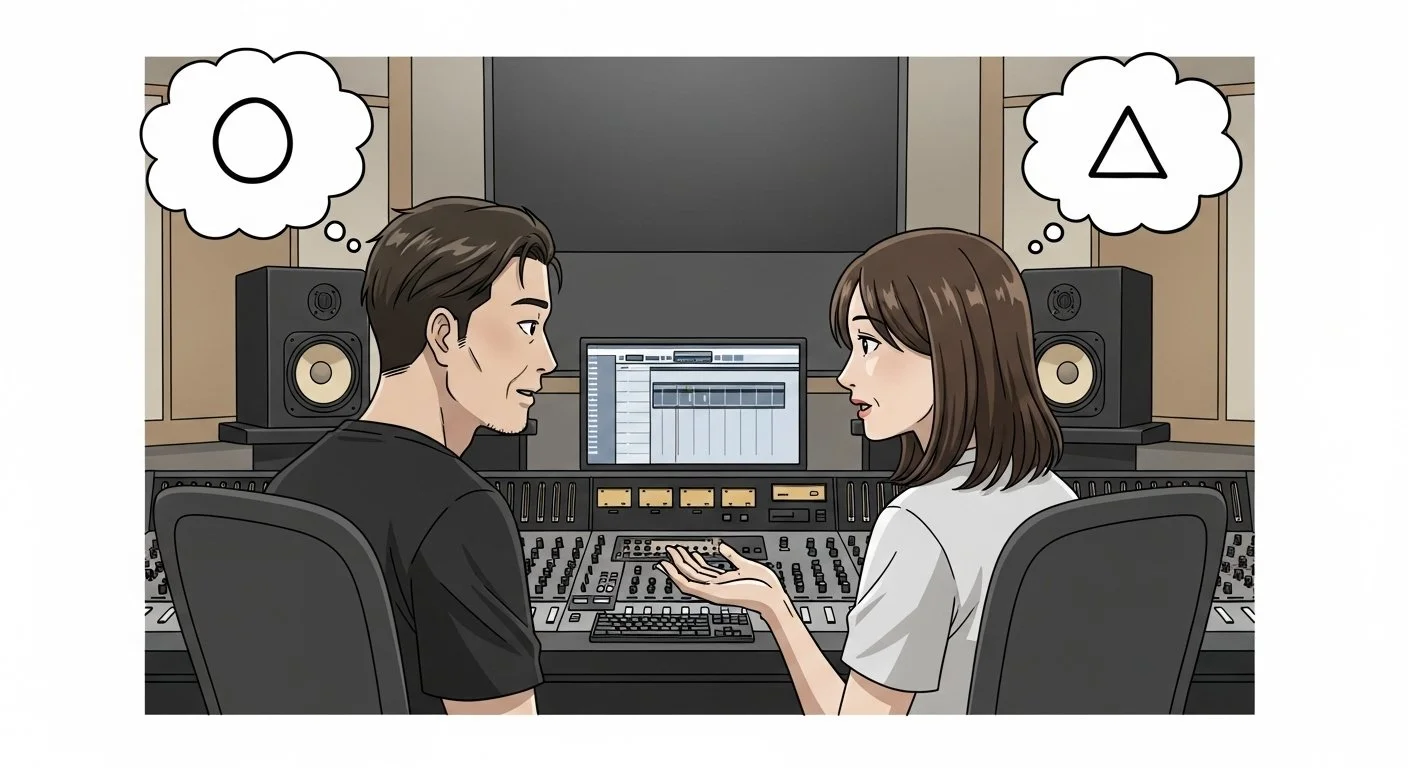Knowing What They Mean: Producing Through References and Vibes
One of the most common ways we communicate musical ideas is by referencing existing tracks. Whether it’s for tone, energy, sentiment, or all of the above, it’s a much faster way to get the message across, especially if your collaborator doesn’t speak fluent Musicianese.
When I work with ad agencies, I’m often shown a cut of an ad that already has temporary music laid in to set the tone and pace. Nine times out of ten, it’s a well-known track (usually a client favourite) that, for licensing reasons, can’t actually be used. My job? Capture the essence of the track without copying it.
Now, that might sound simple, but here’s the kicker: what exactly does the client like about the reference? Is it the tempo? The instrumentation? The groove? Or is it the nostalgia it triggers? That last one is the trickiest. If a client is in love with a temp track, they often become emotionally glued to it. And suddenly, everything else sounds like a poor imitation.
As music producers, we need to be multilingual. Sure, we speak with other musicians in technical terms, but we also need to decode abstract, emotional, and metaphorical directions from non-musicians. Many of my clients will describe ideas with phrases like “sad and reflective” or “like driving down the highway”. Film directors tend to lean heavily on visual language.
I once recorded an orchestral cue for a film I scored, and the director (who was sitting in on the session) jumped up after a take and said, “We need this cue to feel like a Doris Day love scene!” (Yes, I know… classic Boomer reference, but the orchestra got it instantly). The conductor might’ve explained it differently, but the vibe translated perfectly, and the players delivered.
This kind of communication is actually helpful. It shows the client isn’t married to a specific sound, but rather a feeling, a mood. That gives us more creative freedom.
But when it comes to producing a new pop song, reference tracks can still be invaluable. They say more in three minutes than a thousand-word brief ever could. They tell us what the client’s aiming for, who they admire, what audience they’re trying to reach, and where they want their sound to sit in the world.
So I always encourage clients to send YouTube links to songs they love….anything that’s inspired them. The ability to tune in to what’s floating around in someone else’s head is just one more skill we need in the producer toolkit. And sure, sometimes we miss the mark. But with time and experience, the strike rate gets better.

